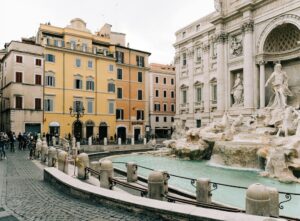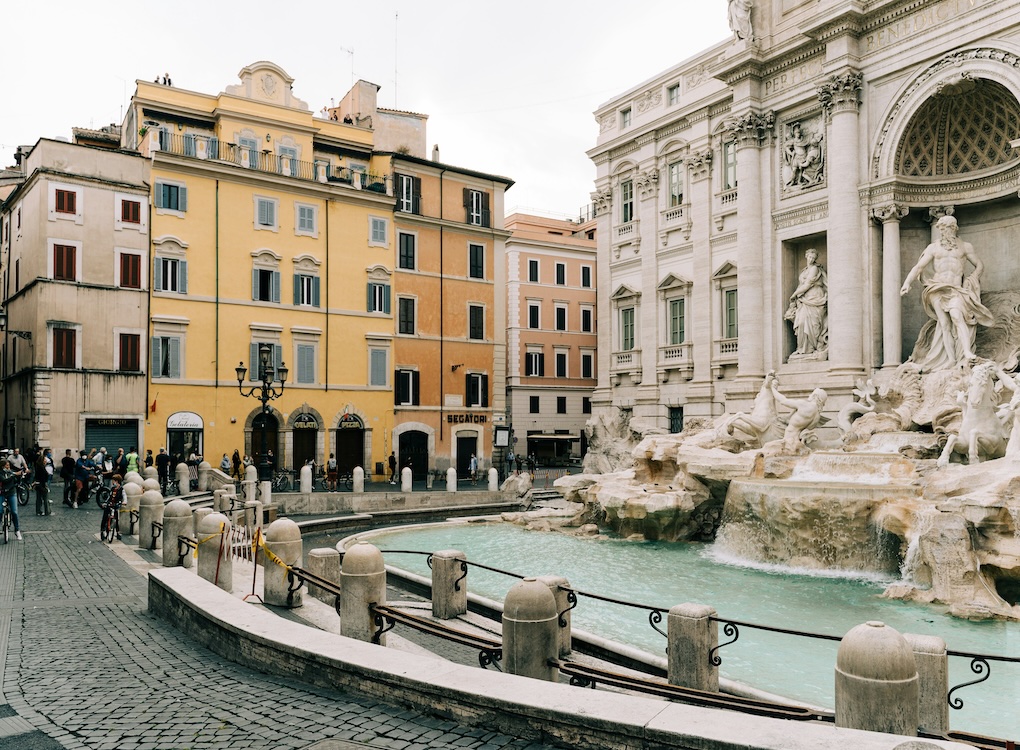Blog
Amazing Ancient Water Fountains
When I’m on the treadmill at the local recreation centre, three times each week, I listen to music or podcasts and watch walking and biking tours from around the world on my favourite YouTube Channel, Prowalks.
Currently, I’m ‘walking’ my way around European attractions. A recent walk included a stop at Trevi Fountain. The last, and only time I’ve been there was on my honeymoon. Fifty years ago, I had other things on my mind than the wonders of how all waterworks functioned.
For better or worse, when I saw this magnificent fountain recently during my walk, I wondered how it all worked. But wait a minute, they didn’t have pumps way, way back.
Join me in this rabbit hole.
The Trevi Fountain was built in the mid-1700s in the City of Rome, District Trevi, at the intersection of three roads – this leads to Tre-Vie in Italian.
In 19 BC, the Romans, with the help of a virgin, built a 22 km Aqua Virgo. Or so the legend goes. This scene is presented on the present fountain’s façade. It served the residents for 400 years.
Over the years, war and neglect caused significant deterioration in the fountain. In the 1100s, a closer water supply was found, and a new aqueduct was built. It is still in use today.
In 1629, the Pope thought it should be more elaborate. He died, and the idea was dropped. This is similar to our current politics, where the ruling party adopts pet projects only to see them disappear silently with the removal or passing of their chief proponent.
One hundred years later, contests for buildings, fountains, and, specifically, the famous Spanish Steps were in vogue. The then Pope started his own contest amongst fountain designers. A Florentine won. There was such an uproar that it was subsequently given to a designer from Rome. I wonder how the objections were expressed without the Internet.
The more things change… But I digress.
By this time in history, a palace had been built on the site, so the designer added it to the back of the palace.
The contest winner was halfway through his build when he died. Another 10 years passed, and many other designers and builders finally completed it.
And we now think construction of major infrastructures takes a long time!
There was a significant renovation in 1988 by skilled artisans. It included installing water-circulating pumps.
Finally!
Then, in 2015, there was a grand opening after a major renovation sponsored by an Italian Fashion company. To the horror of many, it included 100 LED lights for nighttime illumination.
So, the simple concept of water pressure —of one body of water flowing into the receiving body of water —needs to be higher. Easy to understand, but I’m in awe when a height difference of ductwork has to be maintained over 22 km of mountains and valleys.
Please give this a bit of a think. What wonderous sights have you seen that aroused your curiosity?
And speaking of curiosity, I am curious about your thoughts. Please comment by sending me an email with your bit of a think.
Photo by Gabriella Clare Marino on Unsplash
If you enjoyed The Blog, please share it with others. Thanks.
And my thanks to St. Albert’s 50+ Activity Centre for making this Blog possible.

Volunteer Blogger
glenn.walmsley@icloud.com











Post with Permission of the Author:
It seems there is a thread going on here related to water. It so happens that Niagara Falls can actually be “turned off.” In June 1969 engineers and US army corps succeeded in diverting the flow of water from Goat Island to the American side. Niagara Falls, the bigger, better falls stopped flowing!
As a segue, back in 2012 I watched daredevil Nik Wallenda cross Niagara Falls on a tightrope- not tethered! So that spectacle still has me wondering how he was able to withstand the wind and the reduced visibility due to the heavy mist. Isn’t the world and its inhabitants a wondrous thing?